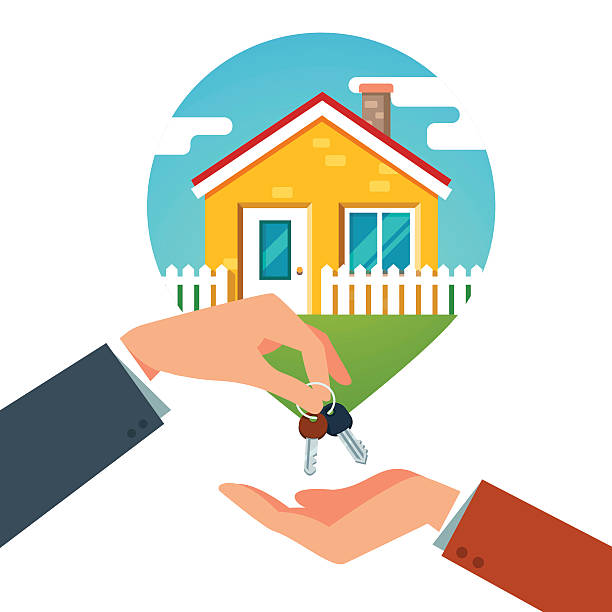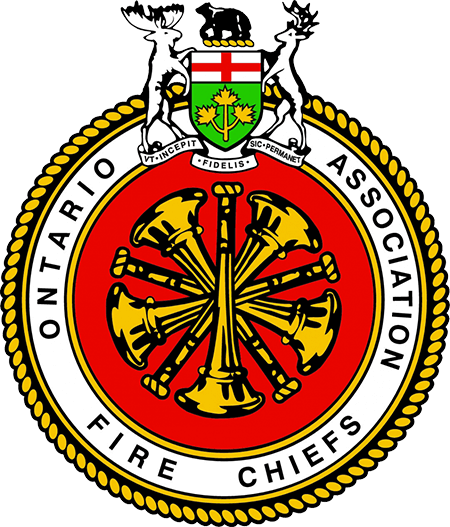Landlords
 When it comes to fire safety within rental dwellings, both tenants and landlords have responsibilities under the Ontario Fire Code and both parties can be charged with offences.
When it comes to fire safety within rental dwellings, both tenants and landlords have responsibilities under the Ontario Fire Code and both parties can be charged with offences.
The Ontario Fire Code requires any landlord or commercial property owner to be responsible for carrying out the provisions for fire safety and defines the owner as "any person, firm or corporation having control over any portion of the building or property under consideration and includes the persons in the building or property.” The owner may therefore be any one of or a combination of parties, including building management, maintenance staff and tenant groups.
Rental Housing
Landlords must know what type of residency they are operating. Types include:
- Single family dwellings
- Apartment buildings
- Two-unit or second suite occupancies
- Boarding lodging and rooming houses
Each type of occupancy must meet the municipality’s Zoning and Property Standards by-laws and may require a business license, and each has different building requirements for fire safety (fire separations, numbers of exits, types of doors, types of alarm systems, etc.).
It is important to know when the building was constructed and under which version of the Ontario Building Code it resides. This code provides the standard to which the building was built. Those minimum standards must be maintained and/or upgraded to meet the Ontario Fire Code.
It is the landlord's responsibility to keep things maintained and ensure the building complies with the Ontario Fire Code. There is zero tolerance in Ontario for Fire Code violations, for which a landlord can be fined immediately. Fines for not having proper fire code maintenance requirements can be up to $50,000 and/or up to a year of imprisonment. A corporation convicted of a fire code offence is liable for a fine of up to $100,000.
Prevention Responsibilities
Landlords must make a schedule of items to check regularly and make sure tenants are keeping up their end of the bargain by not damaging the property and treating it as a home.
Common Violations
- Damaged Fire Separations: The walls and ceilings between apartments and corridors and exit stairs need to be maintained in good condition. Holes from moving furniture, pet damage and bad behaviour put everyone at risk should smoke and flame not be contained in the room of origin. Regular inspection of these items is very important. Think of each unit as a box and where it touches other units; those areas need to be perfect to protect the tenants from each other.
- Garage or shed storage: These areas need to be kept to strict volumes of items and must limit flammable liquids, propane cylinders and other hazardous products. Avoid the temptation to fill them with spare mattresses, propane tanks of various sizes, gas cans and other hazardous items. Always make sure these areas are kept under control for volumes and accessibility.
- Laundry facility hazards: If you provide laundry facilities, it is your responsibility to ensure that the dryer venting is inspected a minimum of yearly and all lint deposits are removed so that it doesn’t create a fire hazard. Smooth metal ductwork is preferred as it gives lint less surface area to accumulate on. Corrugated metal ducting seems easier to install but builds up lint much faster. These should be checked every six months and replaced as needed. Regular maintenance on the dryer by an appliance service person will ensure proper working condition and save electricity as well.
- Furnace room hazards: More often than not, furnace rooms that contain service equipment get filled up with stuff. Furnaces, hot water tanks and laundry equipment need room to breathe. They need clean air to operate efficiently and when there are items packed tightly up against this equipment not only can it create fire hazards, the equipment has to work harder to operate, may overheat or wear out sooner, and takes more energy to operate. Ensure there is one meter of clear area around the service equipment so they can operate safely.
- Electrical overloading: Today there are many more devices that require electricity. As a landlord, it is your responsibility to ensure that tenants are using electricity safely in their units. Extension cords are meant as temporary power sources and should not be used on a daily basis. Power bars in correct applications such as entertainment units or computer installations should be CSA approved devices. Ensure tenants are not using multipliers in kitchen or bedroom plugs, as this draws more current than the electrical wiring was designed to carry and will cause heating and ultimately a fire in the electrical system. Air conditioners and heaters require a tremendous amount of power and should never utilize an extension cord and should have their own dedicated circuit that is rated for the current draw. If you see these things, work with your tenant to provide proper electrical solutions and enlist a professional electrician.
Detection Responsibilities
By law, all Ontario homes must have a working smoke alarm on every storey and outside all sleeping areas. This applies to single family, semi-detached and town homes, whether owner-occupied or rented. Landlords are required to provide working smoke alarms; tenants are required to maintain those alarms in working condition.
By law, all single family homeowners and property owners in buildings that contain no more than six suites are required to have a working carbon monoxide (CO) alarm outside all sleeping areas. The only exception: a home that is completely run on electricity, has no wood fire appliances and doesn’t have an attached garage. Residential occupancy owners of buildings with more than 6 suites had until October 15, 2015 to comply.
Maintenance Requirements
- Alarms must be tested monthly.
- Alarms must be maintained in operating condition at all times.
- Alarms must be installed according to manufacturer’s instructions.
- Alarms must be replaced within the timeframe indicated by the manufacturer’s instructions.
When you are replacing an alarm it shall not provide a lower level of protection than what was required by the Building Code as read on the day the building was constructed (for example, a hard-wired smoke alarm cannot be replaced by a battery-powered one).
Common Violations
Whether you have a fire alarm system, sprinkler system or individual smoke alarms and carbon monoxide alarms, your tenants may knowingly or unknowingly tamper with these devices and in doing so put others and the property at risk.
Commonly, Fire Prevention Officers find alarms and detectors covered with bags or other materials to make them less sensitive to smoke (resulting from cooking, smoking cigarettes or other activities that give off smoke/fumes). Often people paint the alarm so that it appears to blend in with the décor. Some people use sprinklers for hanging decorations or extra clothing storage. CO alarms often get moved away from sleeping areas when tenants believe it should be near a furnace or they remove the batteries for various reasons.
Each of these behaviours puts the tenants at risk and the landlord in hot water when an occurrence happens. Check devices every time you are in the space to ensure they are operating as designed.
Escape Responsibilities
A fire safety plan is required and has been developed in accordance with the Ontario Fire Code. The plan is designed to provide occupant safety in the event of a fire and effective use of fire safety features of the building, and to minimize the possibility of fires occurring. Tenants should be provided with an escape plan, even if generic, for their particular space in the residence. This can then be modified to work with any specific needs.
Fire safety plans should be designed to suit the resources of each individual building or complex of buildings and must be acceptable to the municipality's chief fire official. These plans are intended to:
- Assist the owner of a building with the basic essentials for the safety of all occupants.
- Outline what occupants are to do in the event of a fire, fire safety practices, supervisory staff and related duties, and other related issues.
- Ensure an orderly evacuation at the time of an emergency and to provide a maximum degree of flexibility to achieve the necessary fire safety for the building.
- Assist firefighters in the performance of their duties during an emergency by providing floor plans, building information and occupant information.
Common Violations
- Doors wedged open: Most of the fatal fires that occur in multi-tenant buildings are deaths in hallways and stairwells when other people are overcome by smoke and toxic fire gases while trying to escape. Hallways, corridors, stairwells and apartment doors have self-closing devices on them. These devices ensure that in the event of an emergency the door will close behind the evacuating people and contain the smoke and toxic gases of a fire. When doors are wedged open, or have items hung on the back of them, or seasonally appropriate decorations on them, this affects the self-closer from operating as designed and puts all occupants at risk. In some violation cases the self-closing device itself has been disabled. When you are inspecting your building, open each door and make sure that it closes under its own power and latches shut.
- Items stored in the means of egress: Corridors and stairwells are critical areas where people regularly travel to get to their apartment. These areas also become common catchment areas for shoes, small tables, decorations, recycling boxes and even some not so common items as bicycles, e-bikes, barbeques, skateboards and other surprising items. The importance of clear means of egress cannot be stressed enough. There can be nothing in the halls and stairwells. This space has been designed especially to allow the correct number of people to escape in the correct time. Any reduction to this space makes it more difficult to escape by creating trip hazards, blockages and fire load. The job of a firefighter is made more difficult when trying to move their equipment through this maze of items.
- Exterior portions of building not cleared: Exterior portions of the building must be kept clear for means of egress, including porches, sidewalks and decks, including sidewalks to rear exits. This can be an area where things accumulate. Make sure the accumulation does not inhibit door swing, and exit pathways. Also make sure that seasonally all exit doors are kept unblocked from snow drifts, ice buildup and water problems. Exit doors must operate every day of the year.
Frequently Asked Questions
1. My tenant refuses to let me access the unit to check smoke alarms. What do I do?
Familiarize yourself with the regulations of the Residential Tenancies Act. Checking smoke alarms is your responsibility and you can do so by providing 24 hours’ notice in writing to the tenant.
2. My tenants keep disabling alarms. What do I do?
Keep thorough records every time you enter the residence and the smoke alarm is disabled. Make it part of the lease agreement that smoke alarms must be maintained. Tenants can be charged for disabling alarms if you have proof that you provided them and checked them regularly.
